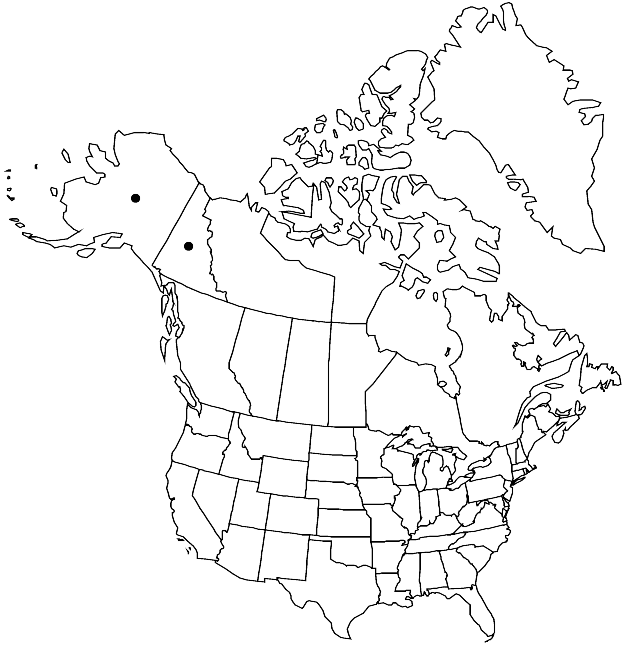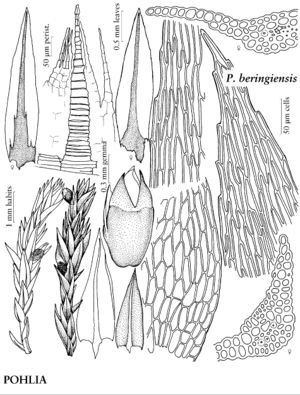Pohlia beringiensis
Contr. Univ. Michigan Herb. 15: 260, fig. 21. 1982.
Plants small, whitish, somewhat glossy. Stems 0.5–2 cm. Leaves ± erect, unaltered when dry, lanceolate, 0.9–1.5 mm; margins serrulate to serrate in distal 1/3; costa subpercurrent; distal medial laminal cells linear-rhomboidal, vermicular, 60–100 µm, walls thin. Specialized asexual reproduction usually present; axillary gemmae single, bulbiform, red, darker to black when dry, leaf primordia at apex and more proximally, laminate, large, flexuose. Sexual condition unknown, presumed dioicous. Sporophytes unknown.
Habitat: Acid, gravelly or sandy disturbed soil, ditches
Elevation: low to high elevations
Distribution

Yukon, Alaska, c Asia.
Discussion
Pohlia beringiensis has cherry red stems with erect, whitish leaves and red bulbiform axillary gemmae. The gemmae are much like those of P. drummondii, but are even more red and contrast conspicuously with the whitish leaves. The organic-poor substrates on which P. beringiensis occurs are quite different from the relatively humic soils on which P. drummondii occurs.
Selected References
None.
